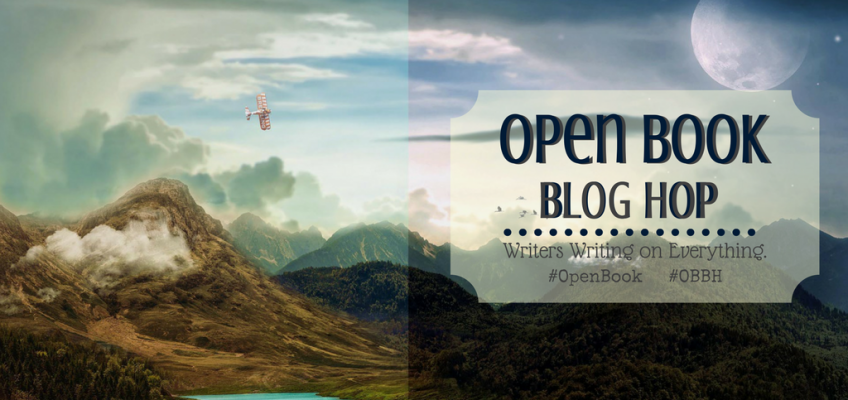Welcome back to another blog hop, with #OpenBook. Here’s this week’s prompt.
Don’t forget to click the purple button to see what everyone else has to say on this week’s subject. It’s at the end of my post.
Describe your steps for moving from a story idea to a finished story.
Before we start, I’d like to thank you all for following these posts and wish you the compliments of the season, however you might choose to celebrate it.
And send you all my best wishes for the New Year.
Now, onto the prompt. As it happens, this is an easy one, at least at the start. I’m very lucky in that I have no angst-ridden hours, working out the plot and the twist. Of course, it also means that I can take no credit for whatever appears on the page.
As I’ve said before, I’m just the conduit, the means for the voices in my head to get their story into the world. My job is mostly producing the finished article.
I’ll get an idea, or more accurately, something will trigger an image in my head. It could be anything and there’s no telling when it might happen.
That’s it.
Next thing I know, I’ll start watching a film, on a screen just behind my eyes.
All I have to do is type what I see. I’m helped by the fact that I can pause or slow the replay speed, to help me keep up. Or change the camera angle to ensure I get every detail.
The only thing I can’t do is fast-forward, to get a sneak peek at the twist, or how it all ends. I have to wait patiently for that as the plot unfolds, like any reader would.
So, that’s the writing part sorted.
When I’ve finished, or at least when the film stops and I can see that it’s the end of that particular playback (there may always be a sequel), I contact my excellent editor, to book a slot for a first look.
While the writing has been going on, I will have started working on a concept for the cover design. For this, I’m aided by my wife, who is much better at arty things than I am.
I’ll get the edited manuscript back, with notes and incorporate them, usually adding about ten thousand words at this stage. As I read through, her comments will prompt amendments and additions. I see them in the same way that I saw the original story. All I do is put them in.
When I’m done, I spell and grammar check it myself and compile an eBook for my beta team. This is then circulated.
Based on their comments, I will add and amend the manuscript again, very often, what they say will suggest things that I can do to get the story into better shape.
When all my corrections are finished, the story goes back to my editor for a final polish. I will set up the Amazon page for pre-orders, with a blurb and my finalised cover design. All I have to do then is format the eBook and paperback from her final edit and upload it all before the publication date.
What about you, do you have any questions about how my process works? If you’re a writer, how is your method different to mine?
Let me know below, then check out what my fellow writers have to say on the subject.
Until next time.

Let me know what you think about this week’s subject.
I’d love to get your comments, please leave them below. While you’re here, why not take a look around? There are some freebies and lots more content, about me, my writing and everything else that I do. You can join my newsletter for a free novella and more news by clicking this link.
Now see what the other blogs in this hop have to say by clicking below.
Check out the other great blogs here.

![]()



Stevie Turner
Happy Christmas to you too, Richard. Having no angst-ridden hours working out a plot suits me fine too – I make it all up as I go along.
Richard Dee
It’s exciting, finding out what’s happening at the same time as the reader will.
P.J. MacLayne
I’ve never added that many words to a revision! I am normally getting rid of them.
Richard Dee
It comes from the same place as the original story. I think that when I re-read, it prompts the voices in my head to tell me more.
Snapdragon
I do an outline by writing a summary of what happens in each chapter. Then I go back and re-arrang, re-write, add, or take out chapters.
Richard Dee
I’m the same. I write the whole thing in one go, then let it sit for a while. When I re-read it, I add or subtract.
Samantha J Bryant
I love it when I feel like the conduit for my story rather than a miner excavating one. @samanthabwriter from
Balancing Act
Richard Dee
I’d love to be in control of what’s happening, I’m just the innocent bystander and chronicler of events.